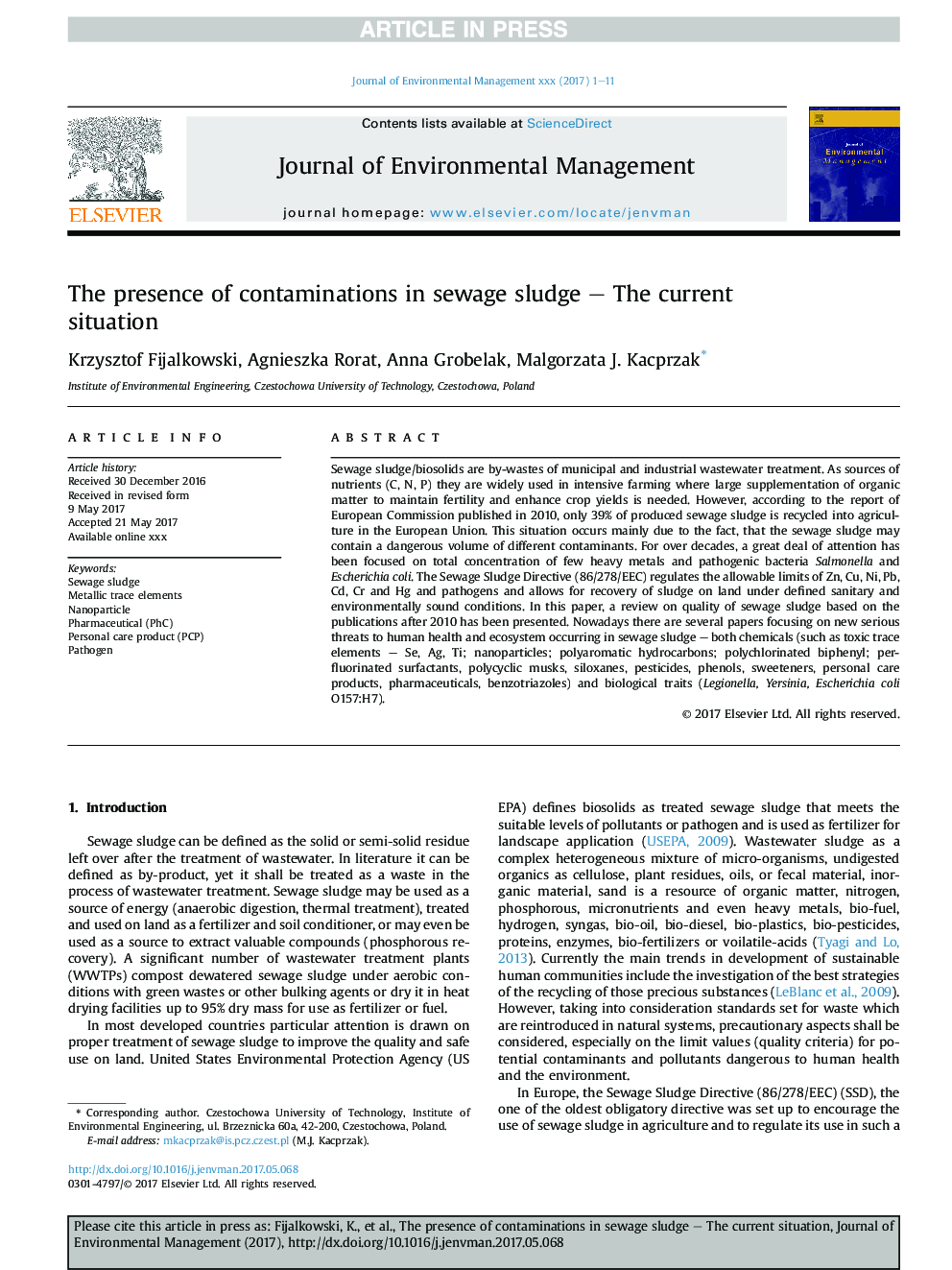| Article ID | Journal | Published Year | Pages | File Type |
|---|---|---|---|---|
| 5116389 | Journal of Environmental Management | 2017 | 11 Pages |
Abstract
Sewage sludge/biosolids are by-wastes of municipal and industrial wastewater treatment. As sources of nutrients (C, N, P) they are widely used in intensive farming where large supplementation of organic matter to maintain fertility and enhance crop yields is needed. However, according to the report of European Commission published in 2010, only 39% of produced sewage sludge is recycled into agriculture in the European Union. This situation occurs mainly due to the fact, that the sewage sludge may contain a dangerous volume of different contaminants. For over decades, a great deal of attention has been focused on total concentration of few heavy metals and pathogenic bacteria Salmonella and Escherichia coli. The Sewage Sludge Directive (86/278/EEC) regulates the allowable limits of Zn, Cu, Ni, Pb, Cd, Cr and Hg and pathogens and allows for recovery of sludge on land under defined sanitary and environmentally sound conditions. In this paper, a review on quality of sewage sludge based on the publications after 2010 has been presented. Nowadays there are several papers focusing on new serious threats to human health and ecosystem occurring in sewage sludge - both chemicals (such as toxic trace elements - Se, Ag, Ti; nanoparticles; polyaromatic hydrocarbons; polychlorinated biphenyl; perfluorinated surfactants, polycyclic musks, siloxanes, pesticides, phenols, sweeteners, personal care products, pharmaceuticals, benzotriazoles) and biological traits (Legionella, Yersinia, Escherichia coli O157:H7).
Related Topics
Physical Sciences and Engineering
Energy
Renewable Energy, Sustainability and the Environment
Authors
Krzysztof Fijalkowski, Agnieszka Rorat, Anna Grobelak, Malgorzata J. Kacprzak,
